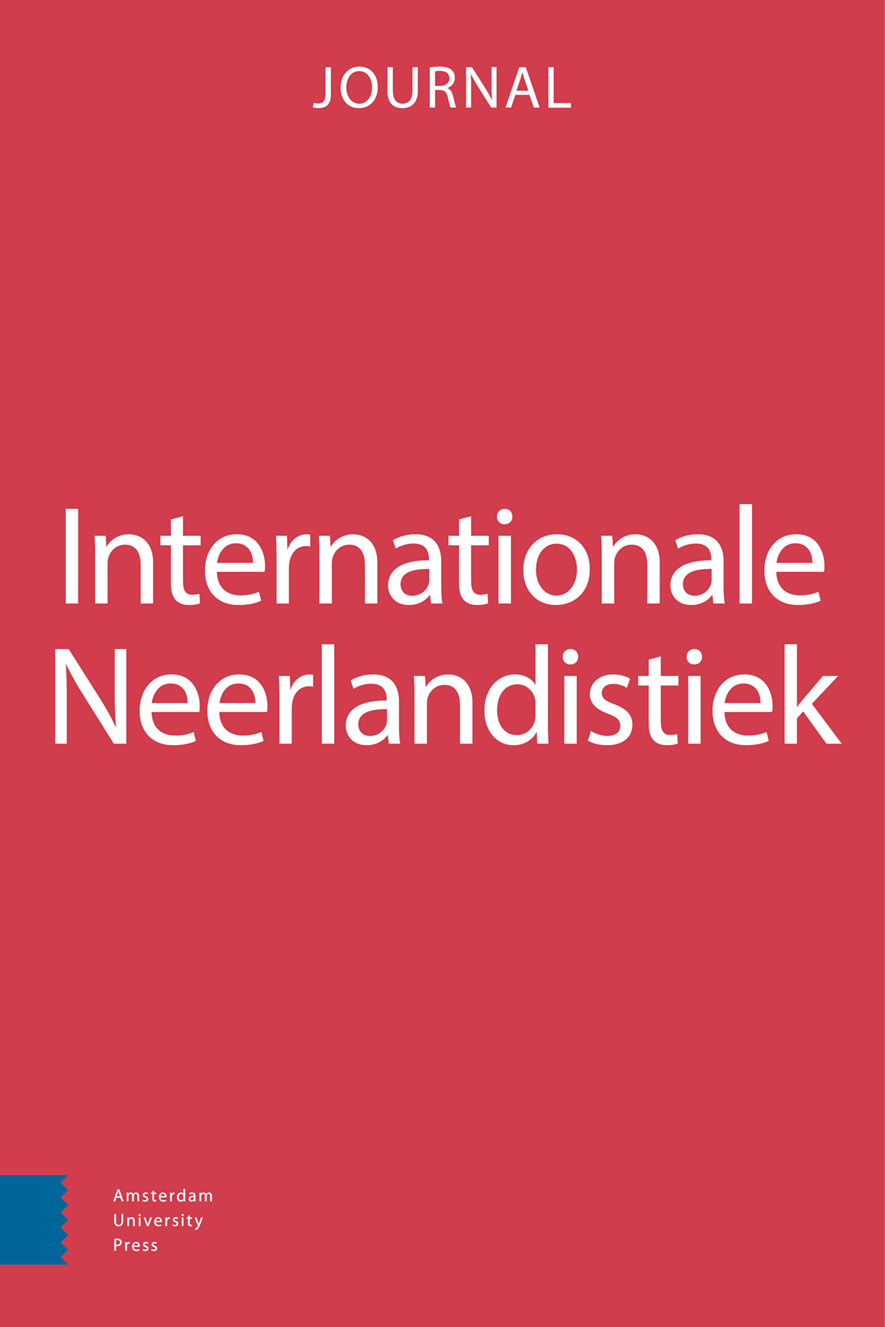- Home
- A-Z Publications
- Internationale Neerlandistiek
- Previous Issues
- Volume 49, Issue 2, 2011
Internationale Neerlandistiek - Volume 49, Issue 2, 2011
Volume 49, Issue 2, 2011
Language:
English
-
-
oa ‘Van den Heer Grimm tot dankzegging voor zyne benoeming tot Correspondent’: bekende en nieuw ontdekte documenten voor de wetenschapsgeschiedenis
More LessThe relationship between Dutch and German philology as well as between Jacob and Wilhelm Grimm and the scientific institutions in the Low Countries have scarcely been a subject of research during the last few decades. However, the correspondence – known and recently found letters – between Jacob Grimm and the Dutch Institute of Science, Literature and the Fine Arts (the predecessor of the Royal Netherlands Acade Read More
-
-
-
oa ‘Don’t be a fool, put a condom on your tool’ - Effecten van retorische figuren in hiv/aids-voorlichtingsmateriaal in Zuid-Afrika
More LessBy Carel JansenThe South African health organisation loveLife tries to provoke youths to talk about HIV/AIDS by presenting them with billboards and radio advertisements with messages that include complicated rhetorical figures that will supposedly puzzle them. In order to test the assumption that puzzlement about health messages is related to willingness to talk about these messages, two studies were carried out in Limpopo Provi Read More
-
-
-
oa Drie versies van Celan: Bernlef, Kuijper en Theunynck
More LessThis article offers an interpretation of three poems that in their title refer to Paul Celan. This evokes a theoretical reflection on the question who is responsible for the intertextuality: the author, the text or the reader. With Eco’s notion of the intentio operis it is argued that the text itself contains signals that legitimize an intertextual reading. Then, with Riffaterre, the question is answered how to discover less explicite references a Read More
-
-
-
oa ‘Zitten is een werkwoord’: de erfenis van Berlage en Rietveld voor het ‘Nieuwe Bouwen’
More LessBy Marion BoersDe Prins Hendriklaan in Utrecht is een typisch vooroorlogse Nederlandse straat met aan weerszijden ietwat sombere, keurige rijtjeshuizen. De meeste woningen hebben erkers om zo veel mogelijk zon in de woonkamers toe te laten. Op de eerste verdieping hebben sommige huizen een kneuterig balkon, meer een soort borstwering, en de dakrand boven de tweede verdieping steekt zo ver uit dat er nauwelijks licht binne Read More
-
Volumes & issues
Most Read This Month
Article
content/journals/18769071
Journal
10
5
false
en


